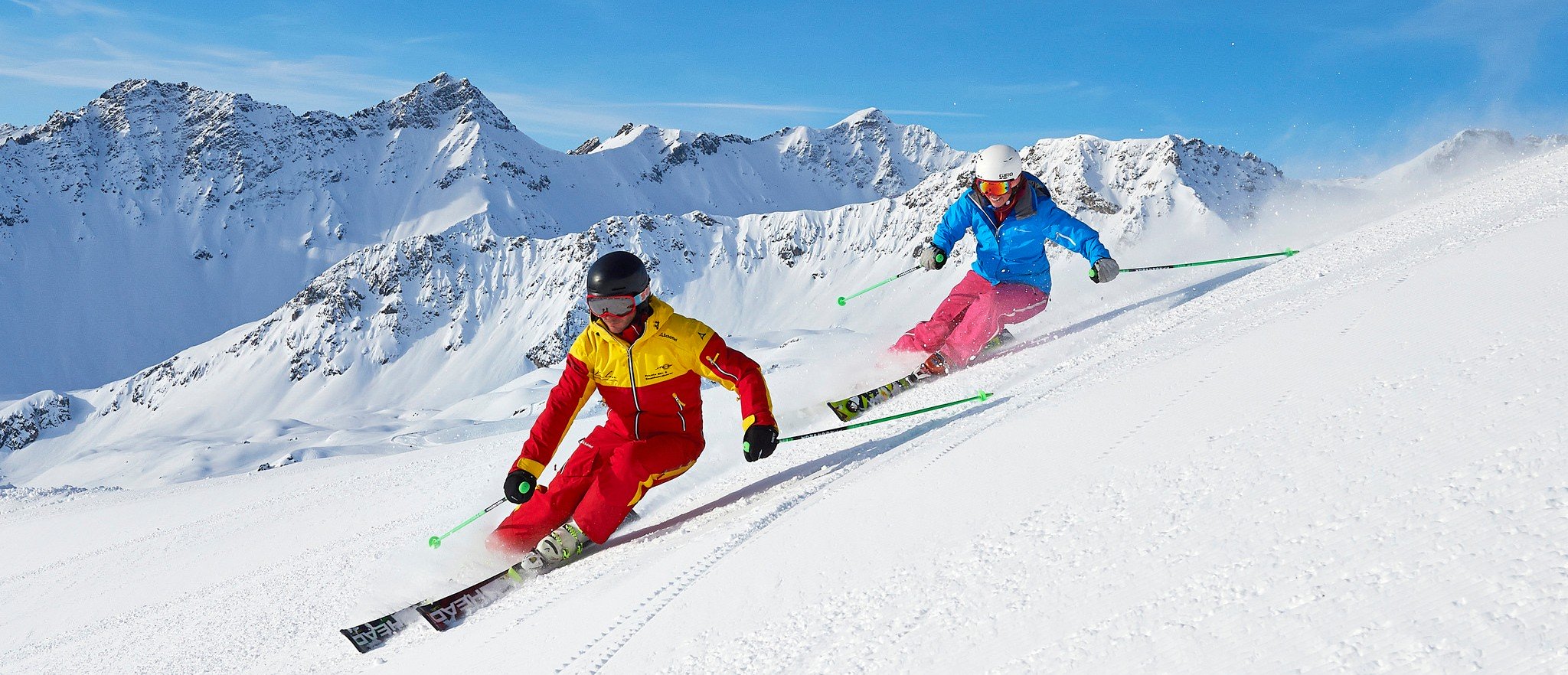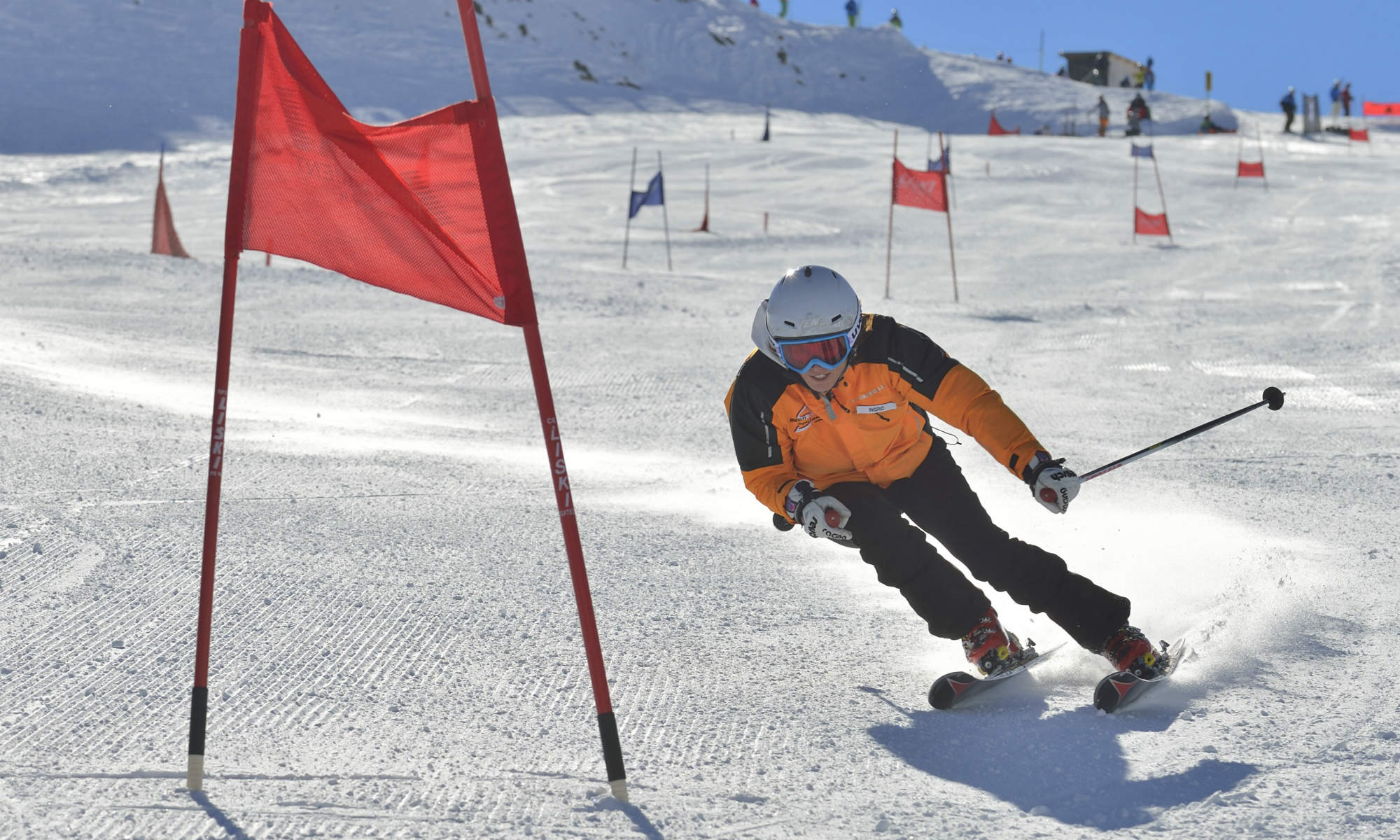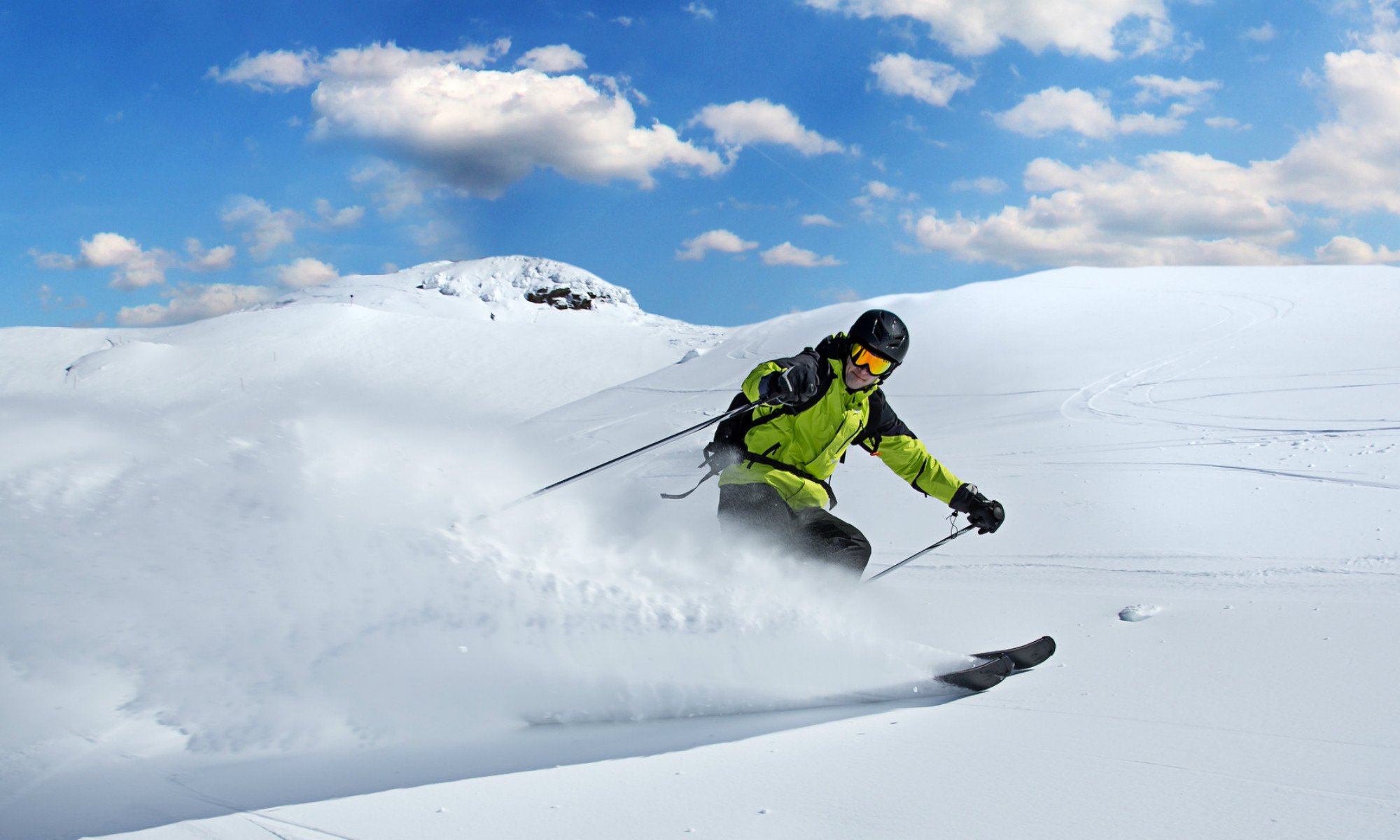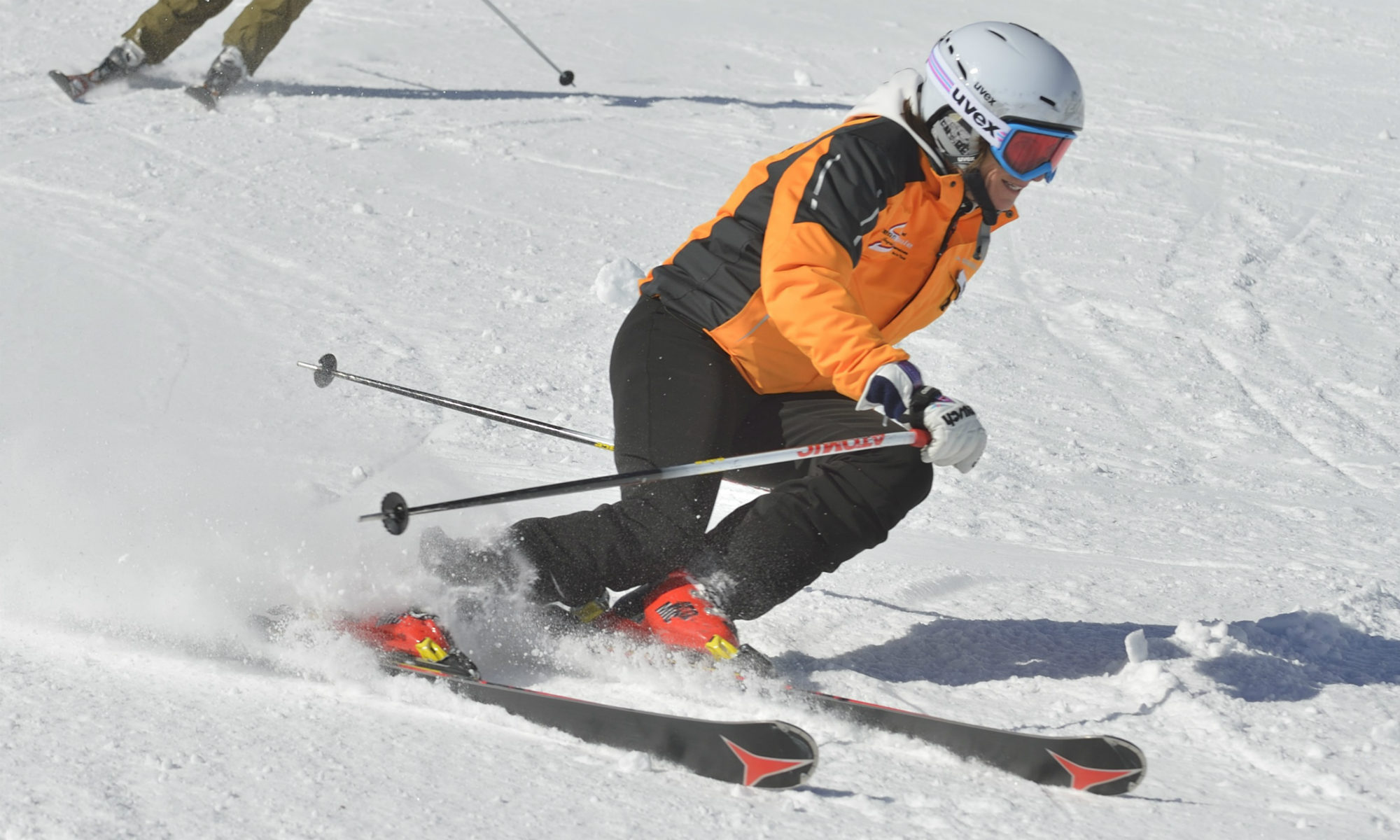
Skiing is nothing new for you? You are already an advanced skier and are on the hunt for even more of a challenge? The checkyeti expert team has put together the best tips and exercises to help you optimise your performance on the slopes and ensure you have that extra portion of fun on top!
Carving: the professionals’ skiing technique
Smooth and streamlined swings on the ridges separate the hobby skiers from the experienced professionals. The popular skiing discipline of carving requires an advanced technique in which speed is maintained by actively lifting the skis instead of letting them drift.
There are many exercises that will help optimise your carving technique and reduce your risk of injury. These are suitable even for advanced skiers who have already mastered the technique.
The best carving exercises:
Carving requires a great deal of muscle strength and flexibility as the snow course is often very compact and therefore resistance is high. Also, it is important to avoid drifting when carving. A varied training programme throughout the year will build up muscle strength and optimise balance & coordination, to ensure you are well-prepared for the challenges faced whilst carving.
Strengthening exercises can easily be integrated into a fitness studio workout. These can be individualised according to personal requirements, the focus however should be on building up leg strength and flexibility. Ski conditioning exercises are particularly effective for improving coordination and balance.
Conscious focusing of the centre of gravity, alternatively on the outer & then inner edge of the skis, can help the advanced skier have a better feel for the edges. To make this exercise a step more challenging, the curve can be initiated with the inner edge of the ski. This helps further maintain control of the swing, as a clean carving technique helps prevent unwanted rotational movements.

Short turn skiing: keeping your cool on a steep slope
In comparison to the wider movement of carving swings, short turn skiing helps maximise adaptability to the curve ratio whilst on the slopes. This adds flexibility and stability, ultimately enabling particularly dynamic movements. The short turn is the optimal and most risk-free technique on the steep slope, or when skiing in narrow or crowded pathways.
So how best master the short turn? The short turn comprises of three phases: Curve beginning, curve centre, curve exit. Initially, the body’s centre of gravity should lie over the skis, the shin bones pressing into the tongues of the ski boots. This basic position assists easy turning. The legs are then stretched immediately before the turn.
In the first phase of the short turn, the toes grip into the boots, the skis grip the snow and the turning movement is initiated. In the curve centre, the legs are bent and pressure increases on the ski soles, causing them to turn. At the curve exit, most of the pressure is on the ski ends.
The pressure on the lower ski is particularly important when mastering narrow curve radiuses and clean turns. Here, the skier requires extra strength and concentration to flexibly regulate the speed and curve ratio. With short turns, rhythm is just as essential as good technique. One tip is to use the pole for support; the pole dictates the speed and initiates the curve change.
The best exercises for short turns skiing:
Good stamina and regular strength training combined with skiing-specific exercises provide the best preconditions for clean short turns. The following exercises are ideal for those who want to improve or perfect their short turns technique:
Cutting crescents: This exercise should be practiced on a flat slope. The skier stands in a relaxed snow plough position, his or her centre of gravity being on the inside edge of the skis. For this exercise, gravity and not the skier induces the initial movement. The skier now shifts the bodyweight to the outer edge of the ski, causing a curving movement and ultimately forming a crescent shape in the snow.
Dwarf-giant-exercise: This exercise ideally prepares the body for stretches and bends in the curves. Directly before the curve, the arms are lifted and the body stretched. In the curve, the hands are rested on the knees and the centre of gravity sinks.
Rhythm exercise: This partner exercise works on the skier’s sense of rhythm whilst skiing short turns. The skier has a partner standing further down the slope. The partner indicates the start of the practice exercise and then, with a constant rhythm, dictates the speed and timing of each turn.
checkyeti tip: Short turns skiing can be learned most easily from an expert, such as a ski instructor. The instructor will actively help and correct the skier, whether privately or during lessons for advanced skiers.
Deep snow: elation in powder snow
Off-piste skiing in deep snow is a completely new experience. Those who have already glided across high-lying deep snow will already know this feeling of freedom, as though skimming over cotton wool. This priceless experience is one that every advanced skier will welcome.

The following tips, tricks and exercises will convert any advanced skier into a deep snow fan:
Although hip-deep snow may restrict vision, it also creates higher resistance, which can be very advantageous when skiing. The deep snow naturally regulates speed, making it easier for the skier to achieve wide and gentle curves in the snow.
Despite the adrenaline kick that comes with an off-piste skiing adventure, safety should still be the main priority. As with prepared slopes, there are vital rules that apply to off-piste areas.
Deep snow skiing requires a specific technique. When freeriding, the body position is the same as with regular piste skiing but the skis should be closer together to optimise movement control. In deep snow, the lower ski is also the leading ski, this ski dictating direction and swing.
The best exercises for deep snow skiing:
It’s recommended to practice the following 2-part exercise on a flat deep snow slope as resistance is naturally stronger when on deep snow:
Skiing in a straight line, slightly bend and stretch the knees. This helps gain a better feeling for the powder snow and also mimics the movement needed for carving in powder snow.
Now add gentle direction changes to the left or right. These changes prepare skiers for the movement dynamics on steeper deep snow slopes and should be rhythmic, so as not to leave behind deep snow banks.
checkyeti Tip: Advanced skiers with no previous experience of deep snow and who do not know the mountain area should only go off-piste in the company of a mountain guide. The Arlberg is renowned for being a deep snow paradise, one particular highlight being freeride tours with the former world skiing champion Toni Zangerle.
Mogul slope: the ultimate skiing discipline
Irksome snow humps that hamper a smooth descent – who doesn’t know them? Mogul slopes have not been named the ultimate alpine skiing discipline without reason. Unfortunately nature forms many of these humps, making them a constant companion to every skier. They take a good portion of courage, muscle power and the right technique to be mastered.
Skiing moguls with slightly bent hip, knee and foot joints will optimally cushion your joints against the harsh jolting caused by the irregular surface. The body’s centre of gravity is lightly focused over the skis, which are positioned slightly closer together than usual.
The curve changes on a mogul piste are the reverse of those on a “normal” slope; the curves being initiated during the knee bends and the legs being stretched during trough cornering. The pressure is centred on the edge of the ski. Inexperienced mogul slope skiers should start off from the peak of the mogul, as the push off is slower and therefore easier to master.
The best exercises for mogul slopes:
Comprehensive fitness training provides a solid basis for mastering mogul slopes. Once out on the piste, it’s best to choose a trail that runs diagonally to the slope, as the pace here will be reduced. Additionally, the short turns technique should be well-established as this is essential for mogul slopes; short turns maximise control when navigating the snow humps.
Generally it’s recommended to practice the mogul slope technique on wavy terrain or on the edge of the slope before trying out the real thing. Here, it’s important to choose a trail and to remain on it. The skier chooses to either ski over the moguls or through the valleys between them.
The skier skis up the crest of the mogul, the knees bend and the skis slip downwards and off the snow hump.
Once comfortable with the one procedure, training can be further expanded so that the skier can combine both skiing styles, traversing over or around the moguls.
Black run: tips and tricks for icy pistes
Black runs are the most challenging runs. Avoided by some and adored by adrenaline junkies, what really is the best way to master these icy slopes and ski down to the valley safely? The magic formula is called edging: Here, the crux lies in the tempo, which is regulated by a well-controlled edging angle. During edging, the knees tilt towards to slope, the lower ski bears the weight and bothersome slips on the icy slope are hindered.
The best exercises for black runs:
An optimal but simple way to practice edging is to place the hands on the knees, pressing them downwards whilst manoeuvring. Through the increased pressure, edging immediately becomes easier. Friends or companions watching from further away will see a spray of snow if you are successful!

These exercises should be practiced on flatter slopes, to minimise the chance of injury. For balance & control and to reduce the strain on the knees when bending them towards the slope, the skis should be positioned at a slightly wider distance. Also, it’s recommended to begin with a slower pace and ski in large curves to prevent speeding and ensure optimal braking.
checkyeti Tip: Adrenalin junkies with advanced skiing experience will be in their element in Kitzbühel, home of the World Cup Downhill Strip that guarantees the ultimate adrenaline rush.
I have always loved snow but winter in England was usually more grey than white. Now living in Austria, my kids have inherited my passion for skiing and we make most of every winter, getting out in the snow whenever we can!
